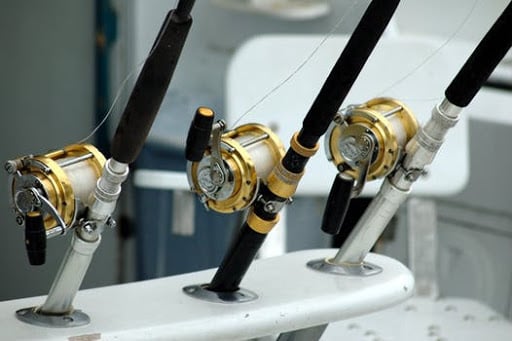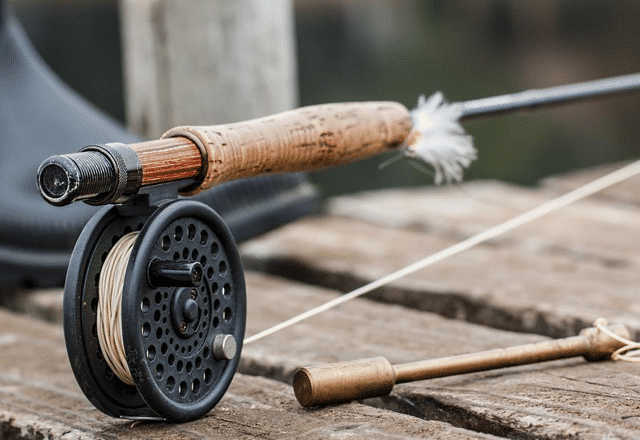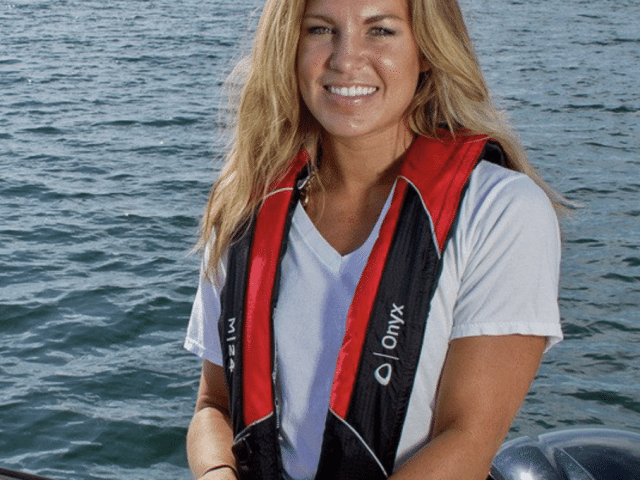There’s a lot that goes into picking a fishing rod. This is a deeply personal, often contentious issue though, and everybody that likes to fish has their own differing opinion on everything from the action of the rod, to the materials used.
We wanted to clear the air a bit and talk about all the different types of fishing rod, what they’re best for, and how to choose the one that best meets your needs, and pay some special attention to the differences between a freshwater rod and a saltwater rod.
This is not meant to be the end-all, be-all answer for what rod you should buy next. Instead, think of this more like a general overview that you can use to make picking your next rod less of a headache, and maybe even a little more fun as you can be sure you’re buying exactly what you need for either freshwater fishing or saltwater fishing.
How to Choose a Fishing Rod

There are a lot of things that can make or break a fishing rod’s performance. Certain materials and designs are going to excel at one thing, say bass fishing, over another, like deepwater fishing.
At the end of the day, the best advice I can give you is to match your rod to your bait, and to the kind of fishing you’re doing.
Here are the things you should keep in mind when choosing a rod for your specific activity.
Material
Most modern fishing rods are made of either fiberglass or graphite/carbon fiber. Fiberglass has been used since the 1950’s and graphite, while newer and more expensive, has also gained a tremendous following.
Fiberglass is cheaper, and easier to maintain, but also heavier and less sensitive to vibration.
Carbon fiber on the other hand is more brittle and more expensive, but lighter and stiffer. There are pros and cons of each, but in general what you should focus on is how the material affects the action and power of the rod.
Let’s talk about what each of these things mean, and how to match them to the type of fishing you want to do.
Action

When we talk about the “action” of a rod, we are essentially talking about how the shaft of the rod itself (called the blank) bends. If the rod bends further towards the tip when you apply pressure, such as setting a hook or reeling in a big catch, that’s a “fast” action.
If the rod bends towards the middle or bottom third of the blank are “medium” or “slow” respectively. You’ll see rods that are any combination of these three, such as “extra fast” or “medium-slow” depending on where and how they bend.
This is important because for some things, like bass fishing, you want a very fast rod so you can set the hook at exactly the right moment. Faster actions also tend to translate more movement and vibration to the person holding it, which is great for single-hook fishing with live baits where you need to feel the difference between a fish taking a nibble, and taking the bait.
Conversely, a slower action rod is better for things like treble-hook fishing or fishing with a spinnerbait or crankbait where you have a smaller hook that can be pulled right out of a fish’s mouth by a faster action with less give.
Power
The “power” of a rod is how much force or weight is required to bend a rod. You’ll often see this listed as “rod weight”. This also has a big influence on the actual breaking point of a rod.
With this, you want a rod that’s matched to your type of fishing. Doing some offshore fishing and going after Marlin? You’ll want something at least in the 100lb+ range in most all cases.
If you’re going after a large inland fish like steelhead, you’ll want something in the 8-10 lb. range.
In general, saltwater rods are a little more powerful than freshwater rods because, in general, you’re going after bigger fish in the ocean.
Casting vs Spinning Rods
Casting rods are designed with the guides, the circular pieces your line threads through along the blank, on top of the blank. That means you’re looking at them as you cast. These rods are used with casting reels and are designed to work well with spinners and baits, and there are different styles of casting rods for each.
You can tell the difference because a baitcasting rod will have a smaller diameter guide closest to the reel compared to a spincasting rod, because of the way the reels work.
You can also get super heavyweight trolling rods that are designed to trail bait through the water following a boat. These are the rods you’re most likely to use when deep sea fishing for large species such as Marlin and Tuna. This is one of the most common saltwater setups for deepwater fishing.
Spinning Rods are designed, as you might have guessed, for spinning reels. These are ideally suited to longer casts. They are typically made of lighter fiberglass to give you the long casts that you need for something like surf fishing where you need to get the end of your line way out past the breakers. This is another type of saltwater rod, but it’s primarily used from the shore.
Final Thoughts on Freshwater vs Saltwater Rods
You can use casting or spinning rods for either freshwater or saltwater, depending on what you’re going after. You can even get fly rods for saltwater if you want.
The main difference in the two is going to be the materials used, and the thickness or power of the rod. On the whole, saltwater rods are stronger and thicker because of the overall larger fish present in the ocean and salty or brackish inland areas.
Also a saltwater rod is going to have aluminum or ceramic hardware in most cases as these materials are much more resistant to the corroding effects of saltwater.
There’s a rod out there for every kind of fishing, so you shouldn’t hesitate to get one that matches the type of fishing you want to do. There are rods for fly fishing, rods tuned for bass, rods tuned for 600lb billfish species…it all depends on what you need.
Of course, the right gear is only half the battle, you have to get out there and actually use it, after all. So what are you waiting for?
You know how to choose a rod now, the rest is up to you.





